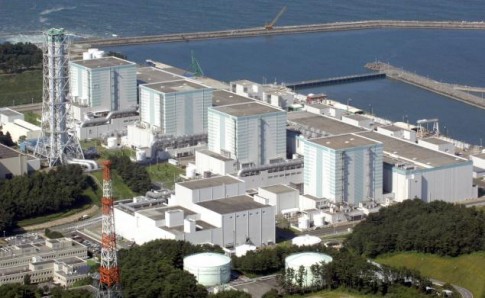Radiation levels surpassed the legal limits at a quake-damaged nuclear power plant in north-eastern Japan, officials said Sunday, raising concerns over radiation leaks and a possible core meltdown, dpa reported.
Radiation at the Fukushima I plant was at 882 microsievert per hour and briefly topped 1,204, Chief Cabinet Secretary Yukio Edano said. Japan allows an hourly exposure of 500 microsievert, which measures the biological effects of radiation.
However, it remained unclear whether a partial meltdown was occurring at the reactor in Fukushima, 240 kilometres north of Tokyo. Edano said it was possible but that it was not confirmed.
Experts said they believed it had been stopped but there was a new danger of a meltdown in the number 3 reactor, the NHK broadcaster reported.
Hisanori Nei, an official at the Nuclear and Industrial Safety Agency, was quoted by Jiji Press agency as saying there was a high possibility of a partial meltdown ahead of a vapour explosion at reactor number 1 Saturday.
It would have been the first partial meltdown in Japan's history, he said. A meltdown is a severe nuclear accident in which the reactor core is damaged from overheating, often because of failure of the cooling system.
Nuclear reactors at the Fukushima I and II plants lost their cooling functions after power and backup generators were cut off by a magnitude-8.9 earthquake Friday, operator Tokyo Electric Power Co (TEPCO) said.
Engineers were in the process Sunday of releasing another dose of radioactive steam from a second reactor into the atmosphere, Edano said.
According to Japanese news reports, the cooling water in the reactor has decreased so much that up to 3 metres of the fuel rods were exposed.
Fresh water has been injected into the cooling system of the number 3 reactor, Edano said. Radiation levels at that reactor were "very small and under control," he said.
The operator notified Japan's Nuclear and Industrial Safety Agency early Sunday that reactor number 3 had lost its cooling functions, making it the sixth reactor to do so since the quake hit.
On Saturday, an explosion destroyed part of the containment structure around reactor number 1 at the plant. TEPCO said it was caused by water vapour.
Technicians had begun to use seawater and boron to reduce pressure, releasing a cloud of steam containing radioactive elements, such as caesium-137. The International Atomic Energy Agency said it had been informed by Japanese authorities that the explosion occurred outside the primary containment vessel, not inside. TEPCO confirmed that the primary containment remained intact.
TEPCO said earlier Sunday on its website that the government had instructed it to reduce the pressure in the containment vessels of both reactors number 2 and 3 at the Fukushima I plant.
About 200,000 people have been evacuated from a 20-kilometre safety zone around the two plants.
At least 19 people had been exposed to radiation, Kyodo said.
Meltdown fears at Japanese nuclear plant
Radiation levels surpassed the legal limits at a quake-damaged nuclear power plant in north-eastern Japan, officials said Sunday, raising concerns over radiation leaks and a possible core meltdown.






